Coffee is something ingrained in the everyday life of the average Vietnamese. From all that experience, it seems that everyone in Vietnam is a coffee authority to some degree. But for guidance on the subject, I turned to self-proclaimed coffee fanboy, Vu, to put his coffee expertise to work.
Fun fact: Vietnam is the second largest exporter of coffee in the world.
About Filter Coffee
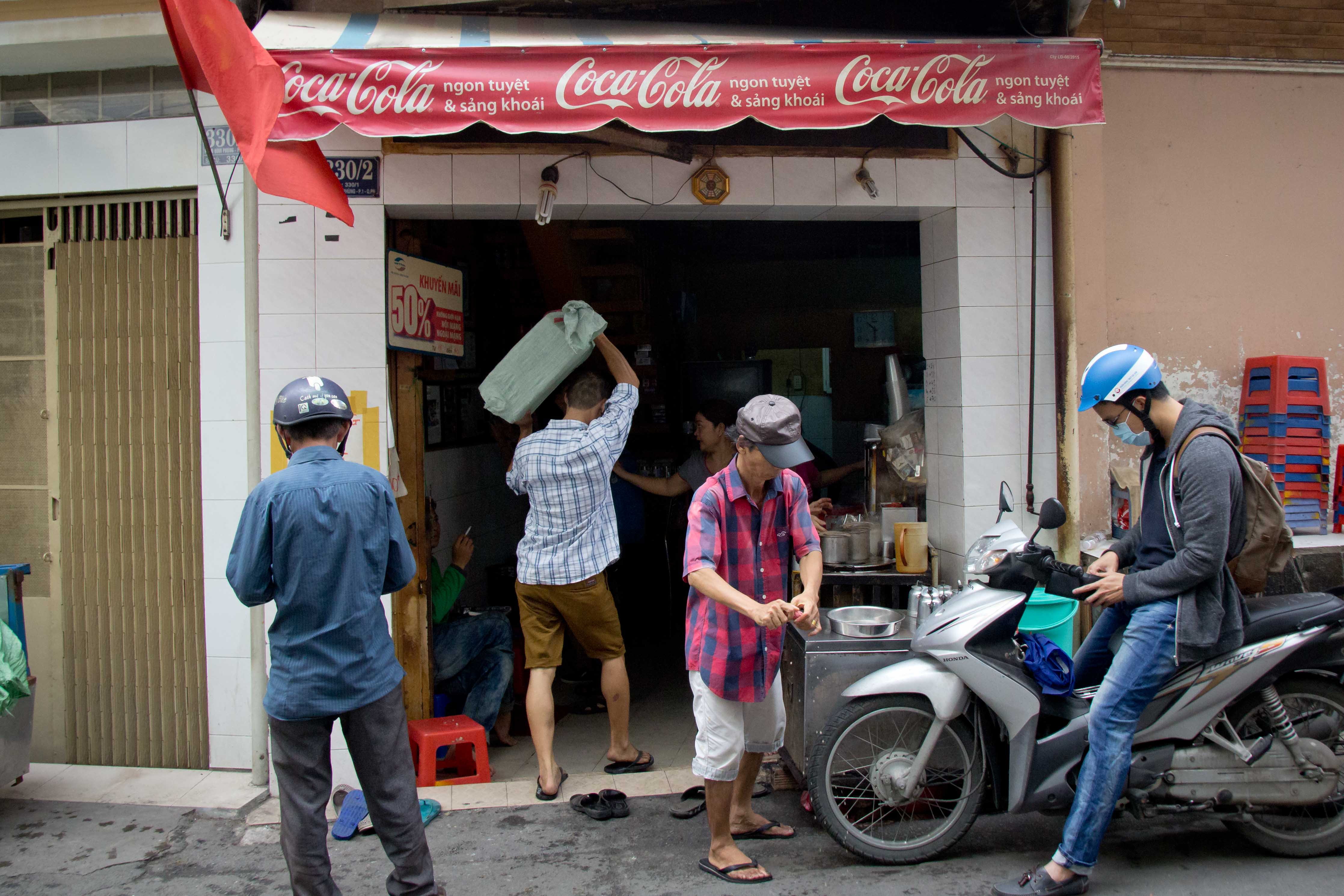
Thirty minutes zigzagging through District 1 and 3 in bumper-to-bumper traffic brought us to Phu Nhuan District, one of the original urban neighborhoods of Ho Chi Minh City. Numbers distinguish the newer districts from the older districts of Saigon. We got off at a fairly busy drag where Vu was waiting for us, leading us to an alleyway branching off into more corridors. But at the top of the alley was a nameless shop. It’s as if a rectangular chunk was carved out of the existing wall to make space for this joint, a literal “hole-in-the-wall” but don’t be fooled by looks alone.
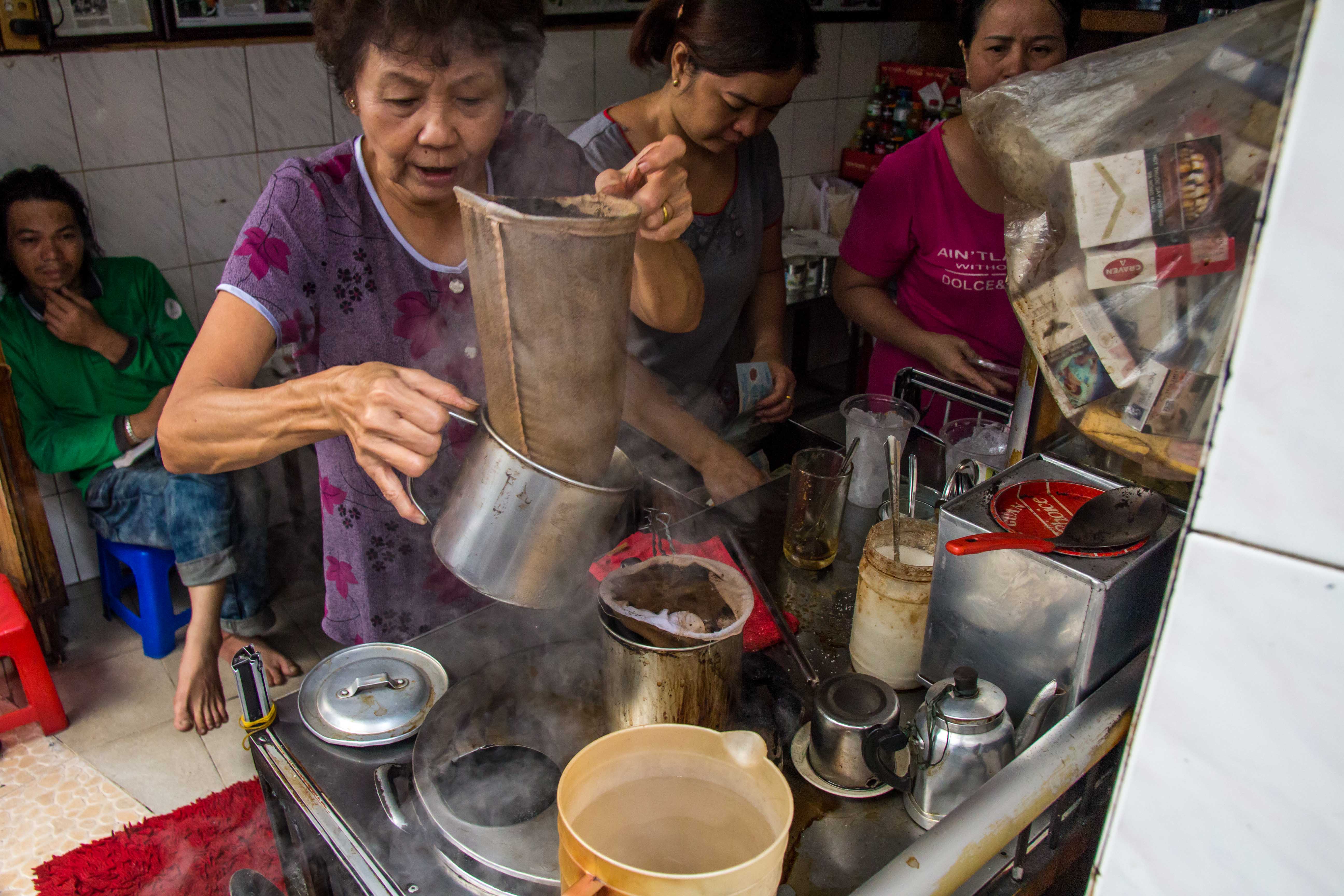
The café, owned by Dan Trang Con (Mr. Ba) and his wife Tuyet, has been open for the past 60 years and shows no signs of stopping. We found Ms. Tuyet busily brewing up coffee for the dozen or so customers on their mopeds waiting for their morning takeaway, drowning herself in cup after cup a black coffee with sugar. Propped on top of the aluminum cart was a strange contraption unlike anything I’ve ever seen in the city. And this device is the main reason why people frequent this stop. This device is the spoon-net filter, a filtration method that is on the verge of extinction in Saigon.
According to Vu, only three or four shops perform this old-fashioned brewing method. The instrument used to filter the coffee looks like something you’d find at an aquatic store for catching fish, with a white cloth ballooning off a steel bubble wand. Spoon-net filtration is so obscure that virtually no literature about it can be found online. I can only go off of what I saw. But it appears that the filter is propped over an empty stainless steel jug. Ms. Tuyet would spoon some coffee grounds into the net and then add hot water to the mix, letting the net sit in the basin for a few seconds before adding more water and quickly lifting the net three times. She then would set the filter to the side and pour the contents of the jug into tall glasses.
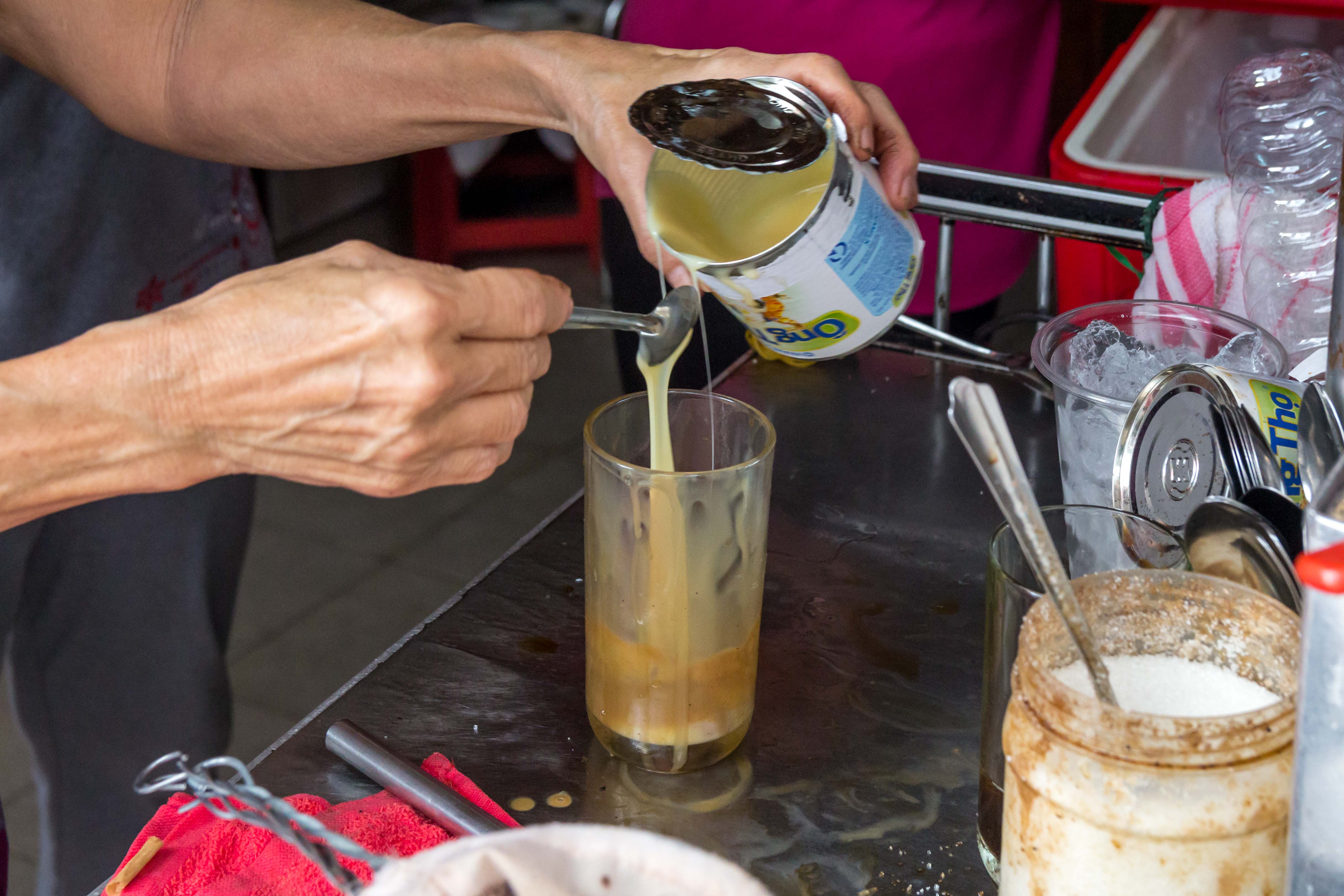
Mr. Ba was sitting in the corner, meticulously opening cans of condensed milk to be used for his wife’s ca phe sua da, iced coffee with condensed milk. His precision is not a result of his old age, but a way to even out the sugar that has settled on the bottom of each can. In Vietnam, Northerners order their coffees “brown” (with milk) or “black’ (without milk). In the south, coffee is served with milk or without milk. My curiosity as to why condensed milk is the preferred dairy supplement was finally answered. Vu stated simply that southerners have an affinity for sweetness. I deduce, based off my observations in the country, that condensed milk is used because of a lack of ample refrigeration in the past.
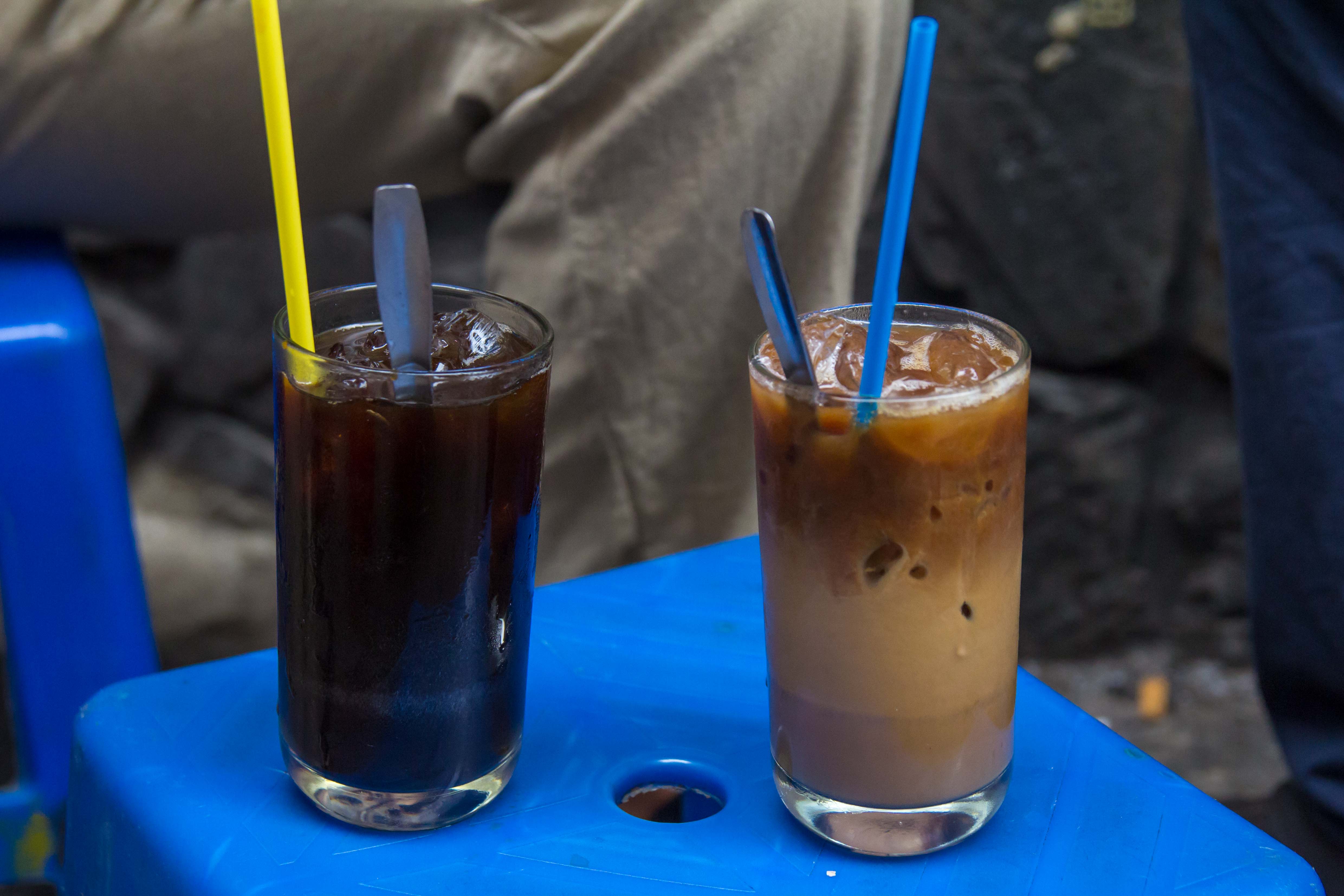
Another aspect to admire about this operation is that in their quest to create the most perfect cup of coffee, the husband and wife decontaminate every ingredient. The tap water used for the coffee sits for a few days, letting all minerals settle, before being sifted through a sieve and then double-boiled for extra purification. Even the glasses are washed out with this extra-purified water as to not taint the coffee. It is also said that Mr. Ba refuses to use pre-ground coffee, preferring to roast and grind his own coffee for integrity’s sake.
Even the glasses are washed out with this extra-purified water as to not taint the coffee.
About the Café
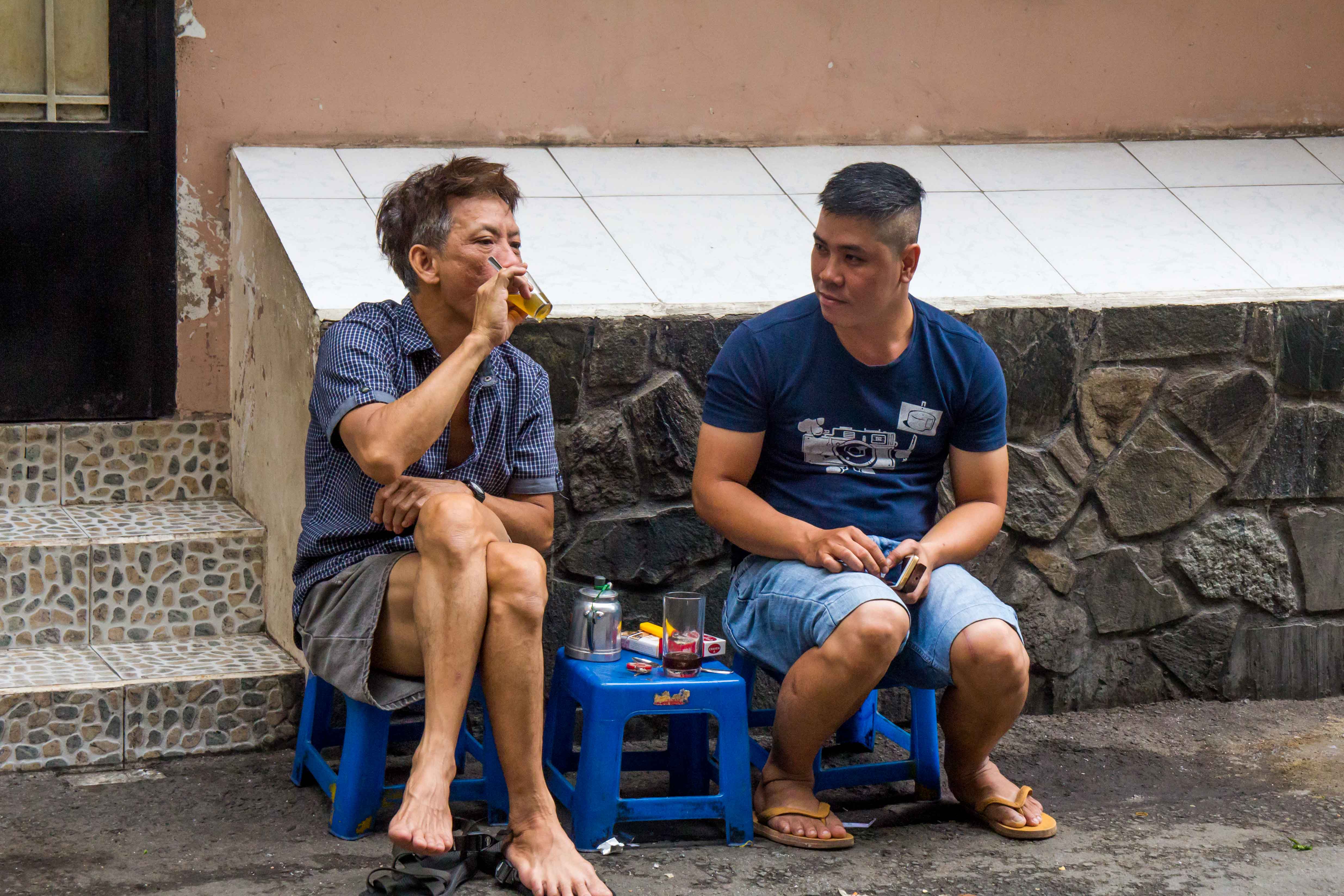
Because of this rare brewing method and the loving attention to each component of their coffee, the nameless café has risen to somewhat of a “celebrity” status. On the wall are dozens of articles, in both English and Vietnamese, from local outlets to big-name media hubs including CNN. The café has also found favor due to the fact that it stays open 24 hours of the day, seven days of the week, 365 days a year. For ten minutes during Tet (Vietnam’s largest holiday), you will find the ‘CLOSED’ sign up and then it’s back to work. Ms. Tuyet takes the morning shift while her husband, Mr. Ba, takes the afternoon shift, before being relieved by their two sons who work the graveyard hours. Funny enough, Vu says his favorite time of the day to visit this shop is at midnight.
We Recommend…

Coffee lovers, make no mistake. If there is one place you NEED to visit while in Saigon, this is the place. You can learn more about coffee here. The traffic is horrendous so to bypass the frenzy, go at the crack of dawn (aka 6 AM). According to Vu, this is the time of day where the atmosphere is best anyways. Each glass is 15,000 VND and only cash is accepted. The location is far from the city proper but a worthy venture.
More information
Name of dish: ca phe vot
Price: 15,000 VND/cup
Opening time: 24/7
Address: 330/2 Phan Dinh Phung Street, Phu Nhuan District
So why don’t you visit here sometime and have a go? Let us know what you think about the delicious coffee in the comments.
Read more: The Magic of Egg Coffee
Enjoyed this article and want more fun information on what to see, do, and eat in Vietnam? Follow us at The 4U Trip Blog!
